The Perfect Health Diet is based on biological evidence for what it is healthiest for humans to eat, not on mimickry of Paleolithic diets. Nevertheless, we believe our diet is a pretty good representation of what Paleolithic hunter-gatherers ate – in fact, a better representation than conventional “Paleo.”
We also frequently note that our diet resembles gourmet cuisines. Julia Child would have loved PHD food!
(Hat tip: Cheeseslave)
So does this mean Paleolithic humans were eating gourmet food?
It sounds unlikely. Modern hunter-gatherers tend to eat similar foods day after day, often prepared simply. Lacking supermarkets, it is difficult for them to gather ingredients; lacking refrigeration, they often have to eat food soon after it is obtained; lacking kitchens and equipment, many cooking techniques were not available to them.
But in many ways Paleolithic food may have been quite a bit more Julia Child-like than anthropologists suppose.
Delicious Macronutrient Ratios
In the book, we argue that:
- The most healthful macronutrient mix is about 30% carb 15% protein 55% fat, with over 90% of the fats saturated or monounsaturated.
- This healthful mix of macronutrients is also the most delicious, because the reward system of the brain evolved to encourage us to eat healthful food.
- Paleolithic humans usually succeeded in approaching this optimal macronutrient mix. The Paleolithic diet was typically minority-carb – 15-20% carb much of the time with excursions toward 50% during periods of carb availability – and minority protein – generally 15-30% – and therefore roughly half fat by calories.
Paleolithic food may have been simple, but it had the most delicious mix of macronutrients.
That Paleolithic diets were rich in fat is supported by the observation that hunter-gatherers have always striven for a high fat-to-protein ratio in their diet. Here is anthropologist John Speth:
Inuit diet was actually composed primarily of fat, not lean meat, with the protein contribution seldom surpassing about 35 per cent of their calories, and usually lower, closer to 25 per cent. Pemmican, the traditional mainstay of Native Americans and First Nation peoples (‘Indians’) inhabiting the Great Plains of mid-continental North America, was a mixture of rendered fat and dried, pulverized lean meat, the mix carefully prepared so that the protein component did not exceed 25–30 per cent of total energy (eg, Stefansson 1956; Speth 2010). [1]
Classic gourmet cuisines also generally have this fat-rich macronutrient mix. Classic French cuisine, for instance, is notably rich in saturated fat. This has influenced everyday French eating in a healthful direction, as Wikipedia notes in its discussion of the “French paradox”:
In 2002, the average French person consumed 108 grams per day of fat from animal sources, while the average American consumed only 72 grams. The French eat four times as much butter, 60 percent more cheese and nearly three times as much pork. Although the French consume only slightly more total fat (171 g/d vs 157 g/d), they consume much more saturated fat because Americans consume a much larger proportion of fat in the form of vegetable oil, with most of that being soybean oil. However, according to data from the British Heart Foundation, in 1999, rates of death from coronary heart disease among males aged 35–74 years were 115 per 100,000 people in the U.S. but only 83 per 100,000 in France.
French cuisine is famously delicious. The resemblance of the macronutrient proportions in French cuisine and Paleolithic food suggest that the Paleolithic wasn’t a time of dreary food.
Delicious Plant, Herb, and Spice Combinations
Paleolithic hunter-gatherers ate a much wider variety of plant foods than we do. Gordon Hillman found archaeological residues from 157 plant species at the village of the Paleolithic hunter-gatherers at Abu Hureyra, Syria, and believed that at least another hundred species must have been eaten that left no residues. (Source: note 15 of chapter 24 of our book.) Modern Americans, in contrast, typically confine themselves to about 30 plant species.
So it’s fair to say that Paleolithic cuisine had a much richer variety of plant foods, herbs, and spices than modern cuisines. Paleolithic humans were intimately familiar with their natural environment, and made full use of the diverse foods available to them.
Likewise, hunter-gatherers ate a much wider range of animal organs and tissues than modern Americans, and probably a wider range of fish and animals too. They must have been familiar with a great diversity of ingredients.
What about flavor combinations? Evidence is sparse on this point, but as far back as we have archaeological evidence, we find that foods were combined in tasty ways.
Via John Hawks, I learned of a story in Slate (The Mystery of Curry) that reported the discovery of residues of a ginger, garlic, and turmeric curry from an ancient cooking pot of the Indus civilization. The sub-head of the story: “It turns out we’ve been eating the spiced dish [curry] for a lot longer than anyone ever imagined.”
Paleolithic Cooking Techniques
If Paleolithic humans had access to a great variety of foods and combined them in delicious proportions and flavor combinations, the last obstacle to the Paleolithic Julia Child would have been cooking methods. What cooking technologies did she have?
Fire has been under human control for a long time – the first known use of fire was a million years ago, and fire for heating and cooking was in routine use by 300,000 to 400,000 years ago; heat treatment of tools is known to have been practiced 164,000 years ago (for sources see the discussion in Chapter 2 of the book).
Roasting and broiling on hot coals or stones heated in a fire was undoubtedly the first Paleolithic cooking technology. Cooking in earthen ovens was routine among Native Americans [3] and probably was a Paleolithic technology.
But boiling is more controversial. Ceramic pots were invented only fairly recently, about 20,000 years ago in China and were not used in western Eurasia until the Neolithic. Steam-cracked rocks, a sign that fire-heated rocks were being used to boil water, were not common in Europe until about 25,000 years ago.
Yet archaic humans seem to have been boiling foods long before 25,000 years ago. Neanderthals were boiling their starches at least 46,000 years ago [2], and Speth has argued that to survive at northern latitudes, they must have been obtaining fat from boiled animal bones 200,000 years ago.
So how did they boil without fire-safe pots? Speth again:
Boiling can in fact be done quite effectively without fireproof containers or heated stones. I first became aware of this possibility … [from] an episode of ‘Survivorman’ on the Discovery Channel (2008, Season 2, Episode 4, Part 3, Day 3, African Plains), a program in which wilderness survival expert Les Stroud had to use his wits to stay alive and functioning for several days, alone, in the bush, having with him only the cameras needed to record his daily activities and a very minimal assortment of modern items that he either brought with him or found along the way. He had to improvise almost everything. What caught my attention on that particular occasion was that Stroud had decided to boil water, but the only container he had was a plastic water bottle. To my utter astonishment, he filled it with water, suspended it over an open fire with the bottle squarely in contact with the flames, and proceeded to bring the contents to a rolling boil without destroying the container, noting in passing that so long as the portion of the bottle that came in contact with the flames was filled with liquid the bottle would not burn. [1]
Here is a re-enactment of Stroud’s demonstration on Youtube:
Speth notes that the Ojibwa commonly boiled water and cooked in birch bark baskets, and states, “Direct boiling over an open fire in perishable containers made from paunches, skins, or birch bark – without the use of heated stones – seems to have been a fairly common practice in the temperate and northern latitudes of North America, as amply documented by Driver and Massey (1957:229–231).” [1]
Herodotus, too, noted that the Scythians commonly boiled meaty stews in paunches, with fatty animal bones supplying fuel for the fire when wood was unavailable. In east and southeast Asia and Melanesia, bamboo tubes were the most popular choice for boiling water and steaming rice.
If Paleolithic chefs didn’t bother to invent pottery, perhaps it’s because it wasn’t superior to their hides, bark, and bamboo:
Experiments conducted by Margaret Holman and Kathryn Egan (1985; see also Munson 1989) … [showed that] direct heating with the tray-like bark vessels required substantially less fuel and less time than applying heat indirectly by stone-boiling … [and] also showed that producing syrup in flat-bottomed bark containers was only marginally less efficient in time and labour than using a metal kettle. [1]
From Speth’s perspective, the invention of pottery and stone heating probably signified the increased use of slow-cooking methods such as simmering, not any dramatic change in how food was prepared. [1]
What about frying? If Paleolithic chefs were using hides as pots for boiling, could they have used the same hides to hold fat for frying?
Leather ignites at 210ºC / 410ºF – a warm enough temperature to support frying. Hides can be tanned using vegetable compounds or brains, both materials available to Paleolithic man. I suspect that frying was, if not an everyday technology, certainly a technology that more sophisticated Paleolithic chefs would have experimented with.
Summary
It looks like Paleolithic chefs employed a variety of cooking methods – roasting, broiling, boiling, baking, and possibly even frying at temperatures up to 210ºC / 410ºF – and had regular access to a variety of foodstuffs which they were able to combine in the most delicious proportions and flavor combinations. They had, in other words, the ingredients, knowledge, and technology to engage in gourmet cooking.
It’s sad that writing was not invented earlier. We have forever lost the lore of the Paleolithic Julia Child who 50,000 years ago might have written Mastering the Art of Neanderthal Cooking!
References
[1] Speth JD. Middle Paleolithic subsistence in the Near East: zooarchaeological perspectives – past, present and future. Before Farming 2012(2): 1. http://www.waspjournals.com/journals/beforefarming/journal_20122/abstracts/index.php. Hat tip John Hawks and Melissa McEwen.
[2] Henry A, Brooks A & Piperno D. Microfossils in calculus demonstrate consumption of plants and cooked foods in Neanderthal diets (Shanidar III, Iraq; Spy I and II, Belgium) Proceedings of the National Academy of Sciences, 108 (2), 486-491. http://www.pnas.org/content/early/2010/12/17/1016868108. See also Henry A, Brooks A & Piperno D. (2011) Reply to Collins and Copeland: Spontaneous gelatinization not supported by evidence Proceedings of the National Academy of Sciences DOI: 10.1073/pnas.1104199108. Hat tip Julien Salvatore.
[3] Kroeber, AL 1925. Handbook of the Indians of California. Bureau of American Ethnology Bulletin 78. Washington, DC: Smithsonian Institution. Cited in [1].








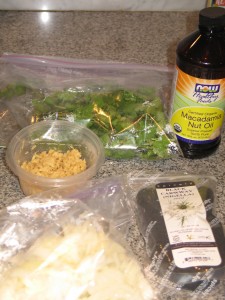
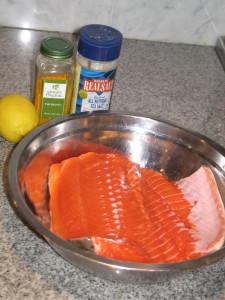
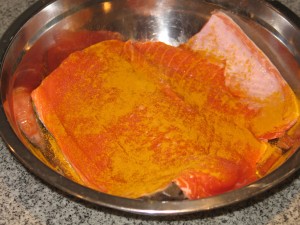
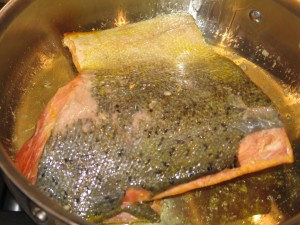
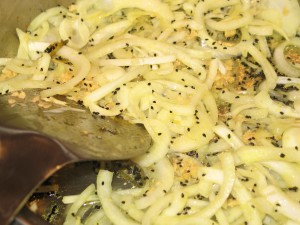
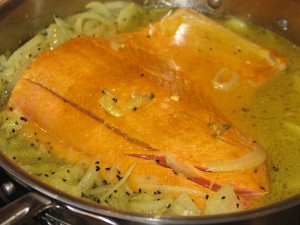
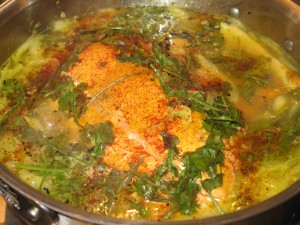
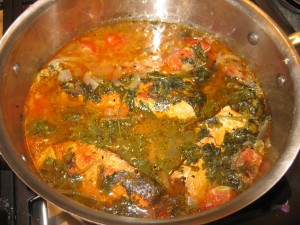
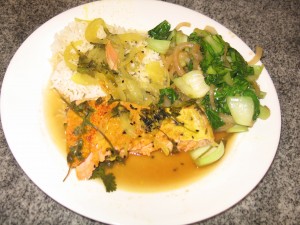
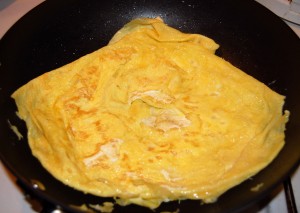
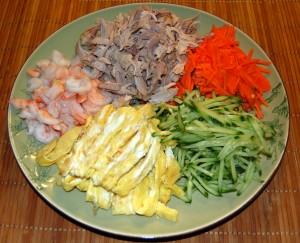
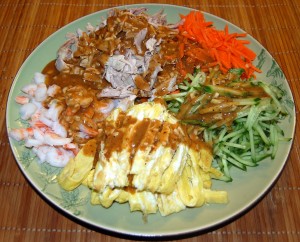




Recent Comments